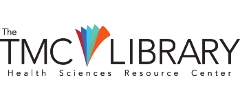Title
Computer simulation of glioma growth and morphology.
Publication Date
1-1-2007
Journal
Neuroimage. 2007; 37(Suppl 1): S59–S70.
Abstract
Despite major advances in the study of glioma, the quantitative links between intra-tumor molecular/cellular properties, clinically observable properties such as morphology, and critical tumor behaviors such as growth and invasiveness remain unclear, hampering more effective coupling of tumor physical characteristics with implications for prognosis and therapy. Although molecular biology, histopathology, and radiological imaging are employed in this endeavor, studies are severely challenged by the multitude of different physical scales involved in tumor growth, i.e., from molecular nanoscale to cell microscale and finally to tissue centimeter scale. Consequently, it is often difficult to determine the underlying dynamics across dimensions. New techniques are needed to tackle these issues. Here, we address this multi-scalar problem by employing a novel predictive three-dimensional mathematical and computational model based on first-principle equations (conservation laws of physics) that describe mathematically the diffusion of cell substrates and other processes determining tumor mass growth and invasion. The model uses conserved variables to represent known determinants of glioma behavior, e.g., cell density and oxygen concentration, as well as biological functional relationships and parameters linking phenomena at different scales whose specific forms and values are hypothesized and calculated based on in vitro and in vivo experiments and from histopathology of tissue specimens from human gliomas. This model enables correlation of glioma morphology to tumor growth by quantifying interdependence of tumor mass on the microenvironment (e.g., hypoxia, tissue disruption) and on the cellular phenotypes (e.g., mitosis and apoptosis rates, cell adhesion strength). Once functional relationships between variables and associated parameter values have been informed, e.g., from histopathology or intra-operative analysis, this model can be used for disease diagnosis/prognosis, hypothesis testing, and to guide surgery and therapy. In particular, this tool identifies and quantifies the effects of vascularization and other cell-scale glioma morphological characteristics as predictors of tumor-scale growth and invasion.
Keywords
Brain Neoplasms, Computer Simulation, Diffusion, Glioma, Humans, Immunohistochemistry, Models, Neurological, Neovascularization, Pathologic, Oxygen Consumption


Comments
PMCID: PMC2243223